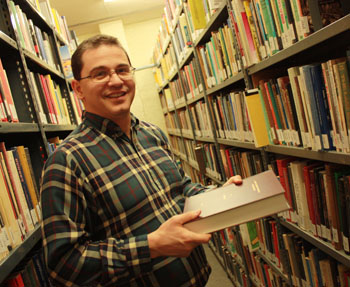 The tires were slashed and windows smashed in the small Suzuki four wheel drive vehicle we were driving. I was with an Italian friend of mine. It was his car. It had blue West Bank license plates, so we thought we would be fine. But we looked like strangers, and therefore suspicious. Silwan was still “hot” in 1991, just after the first intifada. And it remains a contested area today. The major archaeological sites there (the City of David, Hezekiah’s Tunnel, and the Pool of Siloam) are situated at the centre of a heated controversy. Visitors with eyes wide open discover very quickly that archaeology is political. But most of the 500,000 annual visitors to the site don’t get it.
The tires were slashed and windows smashed in the small Suzuki four wheel drive vehicle we were driving. I was with an Italian friend of mine. It was his car. It had blue West Bank license plates, so we thought we would be fine. But we looked like strangers, and therefore suspicious. Silwan was still “hot” in 1991, just after the first intifada. And it remains a contested area today. The major archaeological sites there (the City of David, Hezekiah’s Tunnel, and the Pool of Siloam) are situated at the centre of a heated controversy. Visitors with eyes wide open discover very quickly that archaeology is political. But most of the 500,000 annual visitors to the site don’t get it.
Silwan has long been an Arab village on the hill just south of the Old City of Jerusalem, within spitting distance of the Temple Mount area, or the Haram es Sharif (Noble Sanctuary). The area has been continuously inhabited (more or less) for 5000 years. After all, who wouldn’t want to live on a hill near a year-round spring? Among the earliest inhabitants of the area were Jebusites, who, according to the books of Joshua and Judges, could not be conquered (Josh 15:63; Judg 1:21). Hundreds of years later, the city became King David’s capital, according to the story in 2 Samuel 5. But even then, the Jebusites continued to live alongside of the first Israelite population in Jerusalem. In the late 19th century the City of David area became a settlement for Yemenite Jewish immigrants. Although Jews and Arabs have lived in the area off and on over the centuries, in recent decades archaeology has been drawn into the conflict.
There are two organizations, both interested in archaeology, that are telling the story of Silwan. One of these writes on its website: “Buried under the village lands, 5000 years of history bind the stories of ancient nations and rulers with the present life of the local residents. Dozens of excavated archaeological strata tell the complex multi-cultural saga of Jerusalem.
We, a group of archaeologists and residents of Silwan, invite you to hear the story of ancient Jerusalem and of life in the village today. Our tour sheds light on the role of archaeology in the Israeli-Palestinian conflict and in the discourse of the future of Jerusalem. We will offer a different perspective: archaeology without an ownership, one that bridges between periods, cultures and nations; archaeology which involves the local residents and examines the past as a shared asset regardless of religion or nationality.
We believe that archaeology in Silwan/”City of David” has the power to change the dynamics of the conflict and promote tolerance and respect for other cultures, past and present, for a better future for both the local residents and the whole region.”
Browse through the alt-arch.org website for treasures like these: a history timeline, survey of excavations in Silwan (all of which will be relevant for our visit), principles of a peaceable archaeology, and much more. There is a very fine short essay on the Yemenite Jewish settlement in the late 19th century, and another on the current Jewish settlement in Silwan. These two pieces are must reading prior to a visit to the City of David. Of course all tellings of the story are selective, as this piece at the Jewish Virtual Library website illustrates. The story is accurate, but incomplete. The Wikipedia article on Silwan seems to present a broader perspective.
The problem, as those essays point out, is that the City of David archaeological site has become attached to a partisan agenda. I won’t say more here. You can read the articles. Or, read the articles listed at the bottom of the Wikipedia page on Albert Glock, an archaeologist who was murdered on January 19, 1992 in Palestine. I attended his funeral.
Elad, the organization that now runs the City of David archaeological park, has created an wonderful website about the City of David excavations. The home page includes a slide show with uplifting accompanying music. Pick your language and enter an educational smorgasbord of interactive maps, virtual tours, a 360 degree interactive panoramic photograph (read the instructions first), etc. Don’t miss any portion of this website. There are menus across the top and bottom of the page. Because it’s such a rich page, may take a while to load.
For more on the City of David, see Bible Places, and the Israeli Foreign Ministry Archaeology page.
This hasn’t been a long blog post, but the content of the websites toward which I’ve directed you should keep you busy for a few hours. I am looking forward to another visit to Silwan and the City of David this spring!
 In 1978 I participated in an archaeological dig at Lachish. The site is mentioned in only 22 verses in the Bible. Yet it is one of the most important archaeological sites for understanding ancient Israelite history in relation to the imperial powers seeking to dominate the region at the time.
In 1978 I participated in an archaeological dig at Lachish. The site is mentioned in only 22 verses in the Bible. Yet it is one of the most important archaeological sites for understanding ancient Israelite history in relation to the imperial powers seeking to dominate the region at the time.














